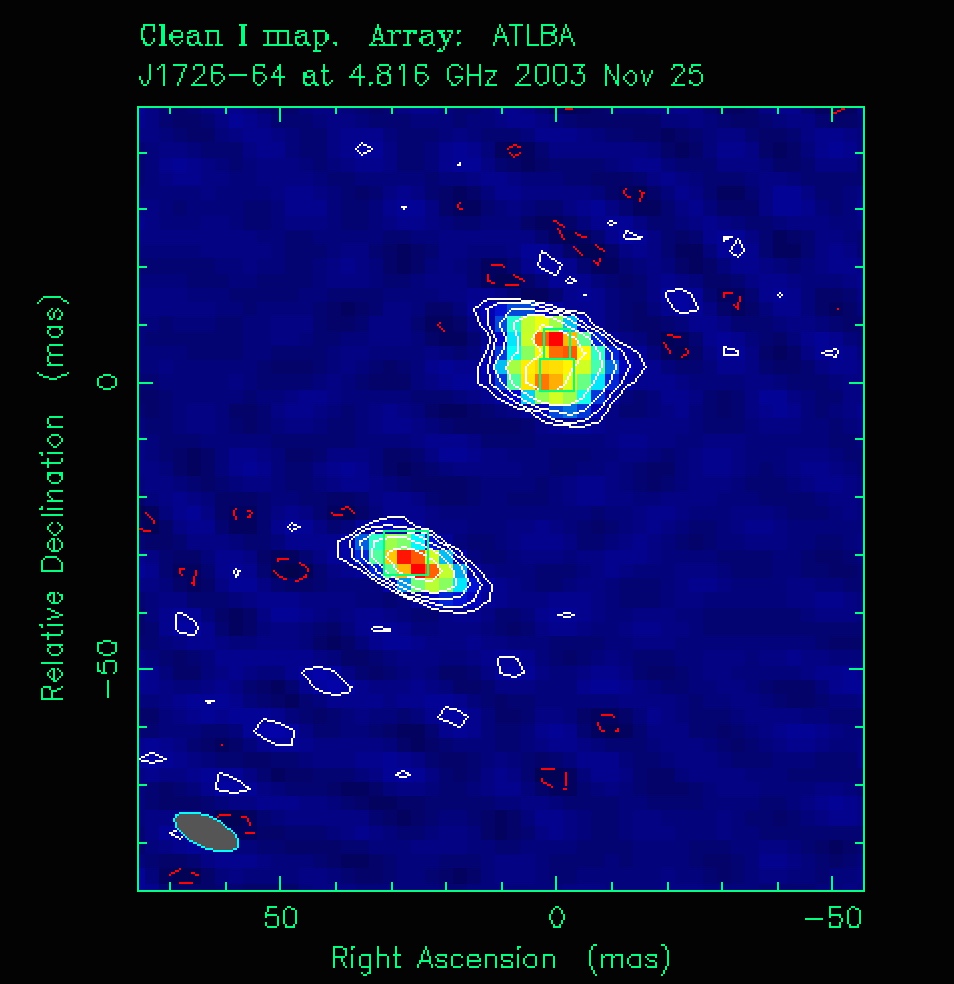| 10th of January 2017 |
|---|

|
| Giga-hertz Peaked Spectrum (GPS) sources: new results |
| by Phil Edwards (CASS) |
|
Giga-hertz Peaked Spectrum (GPS) sources are, as their name suggests,
radio sources that have a pronounced peak in their spectrum when flux
density is plotted as a function of frequency. In addition to this
defining characteristic, GPS sources generally have low levels of
polarised flux density, and display low levels of variability with
time. These characteristics differentiate persistent GPS sources from
others which may have a peaked spectrum for only a relatively short
period of time (months to years). Genuine GPS sources are of interest as there
is evidence to suggest they are relatively young radio galaxies. A set of multi-frequency, multi-epoch observations made with the ATCA resulted in the identification of 9 new candidate GPS sources. The Long Baseline Array was used to image several of these candidates on the parsec (several light-year) scale at 4.8 GHz, using the Australia Telescope Compact Array (ATCA), Mopra 22m, Parkes 64m, and Hobart 26m telescopes. The image above is of MRC 1722-644 (J1726-6427), which is clearly resolved into two components separated by about 40 milli-arcseconds. No redshift has been measured for this galaxy, so its distance and the conversion from the angular separation into parsecs or light-years are unknown. The morphology is reminiscent of another well-known GPS source, PKS 1934-638, which is used as the primary flux density calibrator for the ATCA. Both sources can be categorised as a "compact double", with two well-separated components of similar brightness. Both sources are also characterised by relatively narrow peaked spectra compared to most GPS sources. One interpretation for this is that we are seeing two powerful lobes of radio emission either side of the (currently invisible) core of the galaxy that contains the supermassive black hole powering the lobes. Whether the core is obscured by surrounding matter, or is in a quiescent state, is not clear. This images and others from this project are presented in a paper by Edwards & Tingay published in the Publications of the Astronomical Society of Australia (arXiv:1701.01172). |